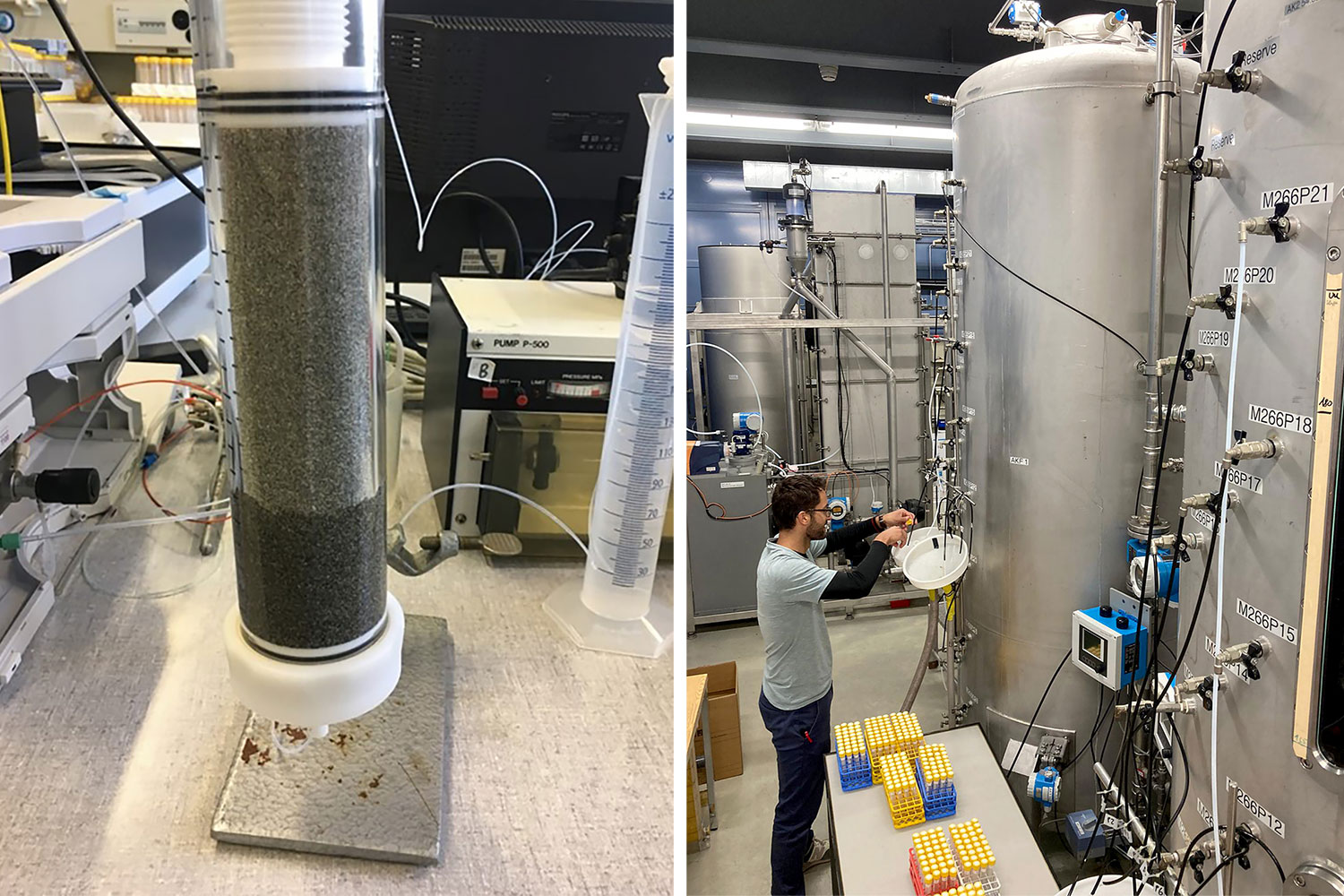
Microplastics are ubiquitous in the environment and have been detected in marine water, wastewater, and even in drinking water, both bottled and tap water. This has led to concerns about the efficacy of current drinking water treatment processes to remove these contaminants.
In 2019, Eawag and the Zurich Water Works launched a joint project to find out whether the tiniest of particles, measuring less than a thousandth of a millimeter across, actually find their way from lake water into drinking water pipes and therefore into homes, hospitals and restaurants. The team has now published the results in the Journal of Hazardous Materials.
The new study investigated the performance of different techniques when it comes to removing nanoplastics from drinking water. Researchers found that the biologically active slow sand filter was the most effective at retaining nanoparticles – achieving an efficacy level in the region of 99.9%. This was shown both in the laboratory tests and in larger, realistic tests and modeling.
So far, there has only been limited research into how exactly nanoplastics are formed. “But it would appear that the degradation of larger plastic particles in the environment eventually results in nanoplastics,” says Ralf Kägi, Head of Eawag’s Particle Laboratory. However, even the process of identifying nanoplastic particles is anything but easy. For this, the team of researchers from Eawag, ETH Zurich, EPFL, and the Politecnico di Torino used labeled nanoplastic particles, whose route through – or final location in – the water treatment process could be tracked using a mass spectrometer.
The team’s experiment involved testing three conventional drinking water treatment processes, including ozonation and slow sand filtration. Ozone is chemically infused into water to treat and disinfect it. However, ozone doses typically applied in drinking water treatment plants hardly affect the nanoplastics transport in the subsequent filtration systems.
Amongst the different filtration techniques, researchers found that nanoplastics particles were most effectively retained when aged (biofilm coated) sand was used with good agreements between laboratory and pilot-scale systems, successfully eliminating them with an efficacy of 99.9%.
Based on their study result, the team says the slow sand filtration technique can be used to estimate the NPs removal efficiency of typical drinking water treatment plants with similar water treatment chains. One interesting finding for water companies is that the models indicate a very high level of nanoplastic elimination, even over long periods of time, such as when filters have a long operating life or long backwashing intervals.
Slow sand filter can remove 99.9% of nanoplastics from drinking water
Source: Tambay News

0 Comments